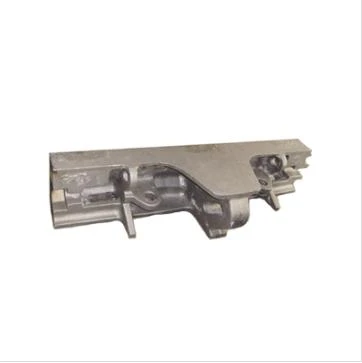- Afrikaans
- Albanian
- Amharic
- Arabic
- Armenian
- Azerbaijani
- Basque
- Belarusian
- Bengali
- Bosnian
- Bulgarian
- Catalan
- Cebuano
- China
- China (Taiwan)
- Corsican
- Croatian
- Czech
- Danish
- Dutch
- English
- Esperanto
- Estonian
- Finnish
- French
- Frisian
- Galician
- Georgian
- German
- Greek
- Gujarati
- Haitian Creole
- hausa
- hawaiian
- Hebrew
- Hindi
- Miao
- Hungarian
- Icelandic
- igbo
- Indonesian
- irish
- Italian
- Japanese
- Javanese
- Kannada
- kazakh
- Khmer
- Rwandese
- Korean
- Kurdish
- Kyrgyz
- Lao
- Latin
- Latvian
- Lithuanian
- Luxembourgish
- Macedonian
- Malgashi
- Malay
- Malayalam
- Maltese
- Maori
- Marathi
- Mongolian
- Myanmar
- Nepali
- Norwegian
- Norwegian
- Occitan
- Pashto
- Persian
- Polish
- Portuguese
- Punjabi
- Romanian
- Russian
- Samoan
- Scottish Gaelic
- Serbian
- Sesotho
- Shona
- Sindhi
- Sinhala
- Slovak
- Slovenian
- Somali
- Spanish
- Sundanese
- Swahili
- Swedish
- Tagalog
- Tajik
- Tamil
- Tatar
- Telugu
- Thai
- Turkish
- Turkmen
- Ukrainian
- Urdu
- Uighur
- Uzbek
- Vietnamese
- Welsh
- Bantu
- Yiddish
- Yoruba
- Zulu
Pro . 22, 2024 19:12 Back to list
Design and Efficiency Analysis of Tubular Heat Exchanger Systems for Industrial Applications
Understanding Tubular Heat Exchangers Efficiency and Applications
Tubular heat exchangers are critical components in various industrial processes, serving the vital function of transferring heat between two or more fluids. They are widely utilized in chemical processing, power generation, HVAC systems, and food processing industries due to their effectiveness and versatility. This article delves into the working principles, advantages, applications, and maintenance of tubular heat exchangers, highlighting their significant role in modern engineering.
What is a Tubular Heat Exchanger?
A tubular heat exchanger consists of a network of tubes, with one fluid flowing through the tubes and another fluid flowing around them, allowing for efficient heat transfer. The design typically involves an outer shell that encases the tubes, which can be arranged in various configurations depending on the specific application and requirements. The function of the heat exchanger is to either recover waste heat from one fluid to preheat another or to cool a fluid down before it proceeds to further processing.
Working Principles
The operation of tubular heat exchangers is based on the principles of thermodynamics. When two fluids at different temperatures come into contact, heat flows from the hotter fluid to the cooler one, following the second law of thermodynamics. In a tubular heat exchanger, this process is enhanced by the large surface area provided by the tubes, which increases the efficiency of heat transfer. The effectiveness of the heat exchanger can be quantified using the logarithmic mean temperature difference (LMTD) method or by applying effectiveness-NTU (Number of Transfer Units) analysis.
Types of Tubular Heat Exchangers
There are several types of tubular heat exchangers, including
1. Counterflow Heat Exchangers In this design, the two fluids flow in opposite directions, maximizing the temperature gradient and, consequently, improving heat transfer efficiency.
2. Parallel Flow Heat Exchangers Here, the fluids flow in the same direction. While this design is simpler, it is generally less efficient than counterflow systems due to diminishing temperature differences along the length of the exchanger.
heat exchanger tubular

Advantages of Tubular Heat Exchangers
Tubular heat exchangers offer several advantages
- High Efficiency They provide a significant surface area for heat transfer, making them ideal for high-temperature and high-pressure applications.
- Robust Construction Their durable design allows them to withstand challenging operating conditions, including corrosive fluids and extreme temperatures.
- Easy Maintenance Unlike other types of heat exchangers, tubular models can be cleaned and maintained with relative ease, thanks to the accessibility of the tubes.
- Versatility They can be designed to accommodate a wide range of fluids, including gases, liquids, and slurries, making them suitable for numerous applications across different industries.
Applications
Tubular heat exchangers are employed extensively across various sectors. In the chemical processing industry, they facilitate heat recovery processes, which improve overall energy efficiency and reduce operational costs. In power plants, they are crucial for cooling systems, where they enhance the efficiency of turbines by managing thermal loads. Additionally, in HVAC systems, tubular heat exchangers are often used for implementing heat recovery technologies, thereby contributing to building energy efficiency.
In the food industry, they serve as pasteurizers and coolers, ensuring that products are processed safely and efficiently while retaining quality. Deciding the appropriate type of heat exchanger depends on factors such as the properties of the fluids involved, required efficiency, space constraints, and cost considerations.
Conclusion
In summary, tubular heat exchangers play a pivotal role in various industrial applications, ensuring the efficient transfer of heat, conserving energy, and improving process efficiency. Their robust design, combined with their high efficiency and ease of maintenance, makes them a preferred choice for engineers and facility managers. As industries increasingly seek ways to enhance energy efficiency and sustainability, the importance of tubular heat exchangers will undoubtedly continue to grow, underscoring their indispensable role in modern technology and engineering.
-
8mm Thin-Walled Cast Steel Manhole Cover Pallet Bottom Ring | Durable
NewsAug.04,2025
-
Premium Cast Iron Water Main Pipe: Durable, Corrosion-Resistant
NewsAug.03,2025
-
Durable Cast Iron Water Mains | AI-Optimized Systems
NewsAug.02,2025
-
High-Efficiency Propane Boiler for Baseboard Heat | Save Energy
NewsAug.01,2025
-
Premium Source Suppliers for Various Gray Iron Castings
NewsJul.31,2025
-
Durable Cast Iron Water Main Pipes | Long-Lasting
NewsJul.31,2025


